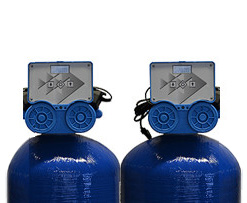Uncategorized
Fault Finding with Siata Valves: A Comprehensive Guide
Fault Finding with Siata Valves
Siata valves are renowned for their exceptional quality and reliability in various industrial applications. However, even the most robust valves can encounter faults and malfunctions over time. Efficiently identifying and troubleshooting valve issues is crucial to ensure optimal performance and prevent costly downtime. In this blog post, we will explore fault finding techniques specifically tailored for Siata valves, equipping you with the knowledge to diagnose and resolve common problems effectively.
Understanding Siata Valves:
Before delving into fault finding, it’s essential to have a clear understanding of Siata valves and their components. Siata valves are renowned for their accuracy, precision, and versatility. These self-operated control valves are commonly used in applications such as heating, cooling, pressure regulation, and flow control. Familiarise yourself with the different types of Siata valves, including pressure reducing valves, temperature control valves, and combined pressure and temperature control valves.
Conducting a Visual Inspection:
Performing a thorough visual inspection is often the first step in fault finding. Check for any visible signs of damage, such as leaks, corrosion, or loose connections. Ensure that all valves are properly secured and mounted. Examine the valve components, including the valve body, diaphragm, actuator, and stem, for any signs of wear or deterioration.
Analysing Performance Issues:
When encountering performance issues with Siata valves, it’s crucial to observe and analyse the specific symptoms to narrow down potential faults. Common performance issues include erratic control, inadequate pressure or temperature regulation, valve sticking, or failure to respond to control signals. Observe the valve’s behaviour under different operating conditions and document any irregularities or inconsistencies.
Identifying Potential Faults:
Based on the symptoms observed, narrow down the potential faults that could be causing the valve’s performance issues. Faults in Siata valves may include
- Clogged or Blocked Valve: Inspect the valve for any debris, sediments, or foreign objects obstructing the flow. Clean or flush the valve if necessary.
- Damaged Diaphragm: Examine the diaphragm for tears, punctures, or deformation. A damaged diaphragm can lead to improper sealing or control. Replace the diaphragm if needed.
- Faulty Actuator: Test the actuator’s response to control signals. Check for proper actuator movement and responsiveness. If the actuator fails to operate as expected, it may require repair or replacement.
- Valve Sticking or Binding: If the valve is sticking or binding during operation, it can impact control accuracy and performance. Check for any mechanical obstructions, corrosion, or worn-out components. Lubricate or replace components as necessary.
- Troubleshooting and Resolving Faults: Once you have identified the potential faults, take appropriate troubleshooting steps to resolve the issues. This may involve cleaning the valve, replacing damaged components, adjusting settings, or calibrating the valve. Consult the SIATA valve’s user manual or contact the manufacturer’s technical support for specific guidance on troubleshooting and maintenance.
Industrial Water Equipment has a full range of spares available from stock, our technical team are only too happy to help wth this. Click here to see more.
The takeaway…
Mastering fault finding with Siata valves is essential to ensure their optimal performance and prevent operational disruptions. By understanding the valve’s components, conducting visual inspections, analysing performance issues, and identifying potential faults, you can efficiently diagnose and resolve common valve problems. Remember to follow the manufacturer’s guidelines and seek expert assistance when necessary. With the right approach to fault finding, you can maintain the reliability and efficiency of your Siata valves, maximising their lifespan and productivity.
Industrial Water Equipment is a company with in-depth knowledge and expertise in Siata valves. Through years of experience and dedicated training, we have developed a thorough understanding of Siata valves and their capabilities, applications, and performance. Our strong relationship with Siata and access to technical resources allow us to offer accurate information, tailored solutions, and reliable support to all of our clients. With practical experience in various industrial applications, Industrial Water Equipment is well-equipped to provide expert advice, system integration guidance, and troubleshooting assistance, making us a trusted partner for industries seeking reliable solutions with Siata valves.

